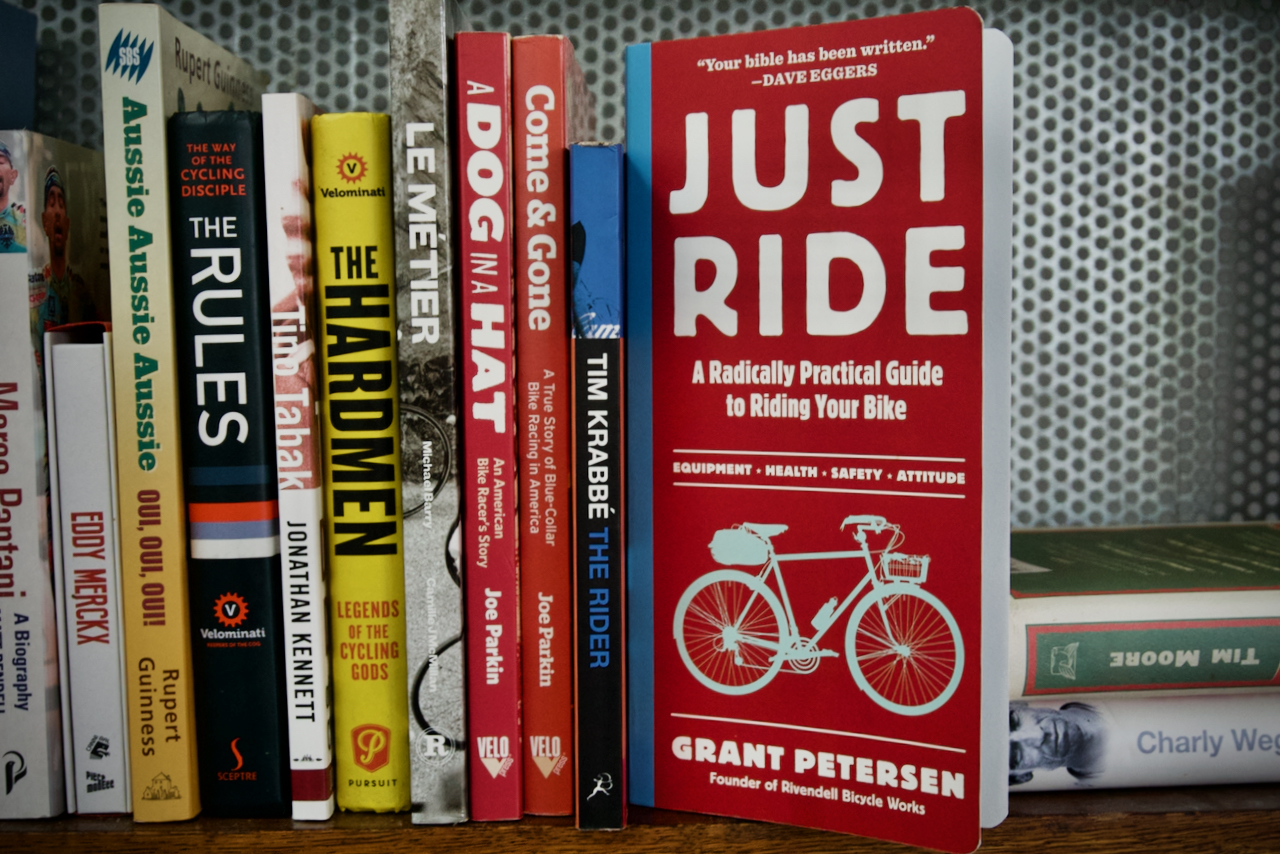Read: Just Ride
Just Ride. It sounds so simple, and so it should be. But for years I tried to make riding as complex as possible, for myself and many others. Not consciously, but yeah, consciously. Riding had to be done right, with the right bike for the ride and the right gear for the bike and the right people in the gear. None of which really should have mattered, but did.
Reading Just Ride, the anti-Rules bible by old school stalwart of two wheels Grant Petersen, was like a kind of cleansing for me. I’d long ago decided that “the way of the cycling disciple” I’d espoused wasn’t the only way for me, and indeed, even when I was espousing it, I knew it was semi-tongue-in-cheek but a matter of importance all the same. Just Ride reinforced what I’d always known, always did, but confirmed that it was ok to do so.
Written (or first published) in 2012, about the time my own notoriety for telling people how to ride was peaking, I only heard of the book a few months ago, watching a video of a bunch of dorks on a bikepacking ride, when one of them pulled the book out. A quick search and order and it was in my hands. I didn’t know what to expect, and the first dozen pages had drawn me in. Petersen was well known to me through his time with Bridgestone bikes in the early 90s and then as founder of Rivendell bikes, where he still builds fine steel framed bikes with more of a utilitarian leaning that a racing one. Which is what the book is all about, as he continuously points to the “unracer”, a type of rider that, well, doesn’t race, and doesn’t let the racing-inspired marketing influence their product choices. As someone who hasn’t pinned on a number for a decade or more (maybe once or twice), I wondered why my most beloved bikes were so race inspired, let alone the stuff I’d squeeze into to ride them. Now, I’m not talking full on electro-carbo-aero weapons, but still race-esque. The power of marketing, as Petersen points out, is a scourge of the bicycle industry, leading the consumer to consume, upgrade, and mimic those robots paid to entertain us.
Petersen makes it easy to consume the content here though, with most ‘chapters’ or sections being only a page or two long, divesting the information quickly and concisely in simple terms even non-cyclists (like my wife who I try not to overload with information!) can understand. And those actual pages, they are long, tall and narrow, not a typical page size, and gives the book a unique look and feel.
Of course, not everything Petersen lays out is, or should be, taken as gospel, and I found myself disagreeing with some of his advice or beliefs. Many times, my own beliefs were challenged and I felt like yeah, I can see how I might have been doing that wrong, or at least gave me a new way of looking at doing it. Some chapters I feel are too technical for probably the main demographic that the book is aimed at, like the breakdowns of geometry and frame materials and building, but for the enthusiast they are an interesting aside from someone with a wealth of experience in his field.
Just Ride (the book) should be essential reading for anyone who rides a bike more than once a year with the kids at the park, and long-timers who are maybe stuck in their ways can get maybe more out of it than the casual rider. Just Ride (the philosophy) really speaks for itself, and should be an essential mantra for anyone who spends too much time thinking about the right kit for the right bike and what the pros do. As some old school sage once said in some other book, “Free your Mind and your Legs will follow.”




